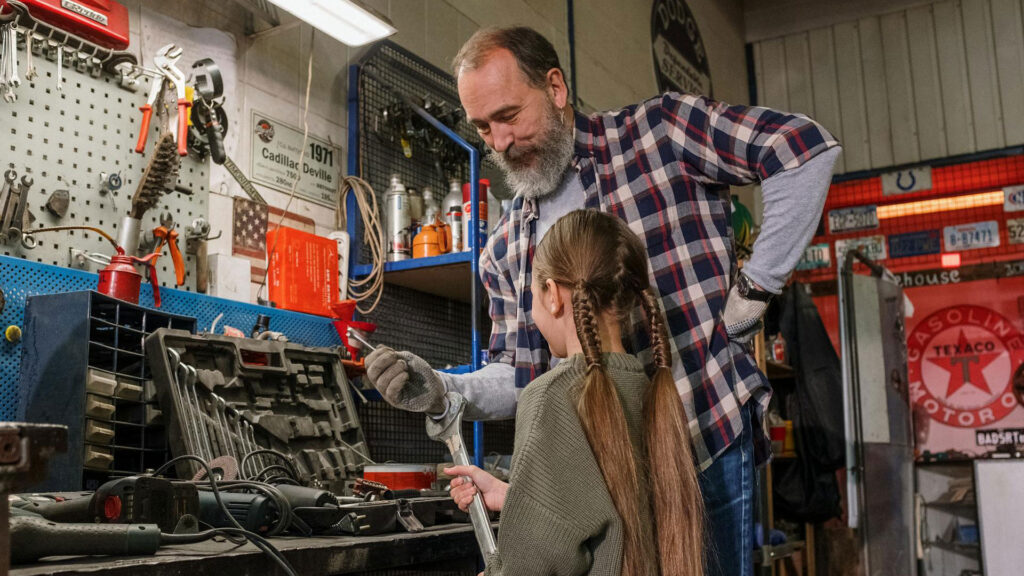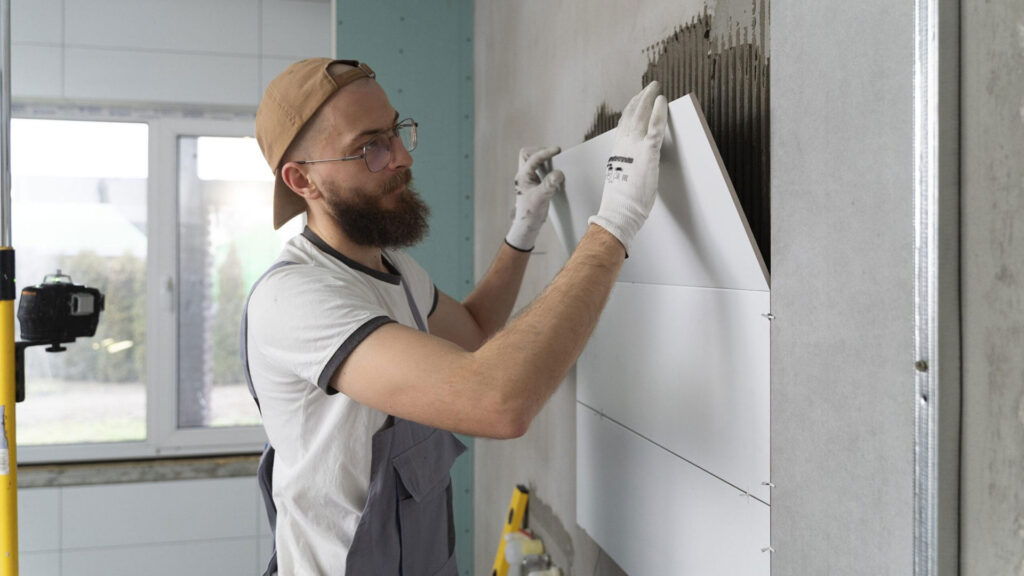In the first step of this guide, I discussed the importance of becoming familiar with your home, your neighborhood, and your city. Familiarizing yourself with these three things will help you understand what needs to be done and how to go about doing it.
Step 2 was all about paperwork. When you own a home, you’re going to have a lot of paperwork that needs to be created and organized properly. One of the most important parts of paperwork is creating the budget for the house. Creating a budget will hopefully enable you to not only do the work that needs to be done, but the renovations you want to do as well.
When I was young, my father needed me to hold a piece of plywood, while he cut it. I told him, “I hate holding wood, while you cut it; I get covered in sawdust. Can’t you get someone else or just use a clamp?” He said, “Son, come out here and hold the wood. You’ll learn how to measure and cut wood. I’ll show you how to install it. You’re going to need to know how to do these things on your own house one day.” I said, “Dad, when I grow up, I’m going to hire someone to fix my house for me.” He said, “When you become a homeowner, you’re going to need to know how to do these things, whether you want to or not.”
He was right.
Every homeowner needs to know how to maintain their house, even you. It’s not a matter of how much money you have, and it doesn’t have anything to do with how much you dislike this kind of work. Some repairs will need to be done immediately, and it’s your responsibility.
The average homeowner is capable of many repairs, maintenance, and even some upgrades, regardless of whether or not they grew up with a father like mine. I encourage you to try. Do what you can and learn as much as you can on each job, so you will become aware of your limits. If you hire a professional to do a job, assist them and ask questions as you go. Then, you can watch your limits diminish over time.
At the beginning, beware of biting off more than you can chew. Hire professionals for any field in which you are not skilled. In many cases, if a job is done wrong, it could damage the house or even pose a health hazard to you and your family. But as I said earlier, every homeowner will need to do their own maintenance from time to time, and before you start working, you’re going to need some tools.
In this initial phase of maintenance, you should consider what needs to be done to the house before you move in, to make you feel safe and secure. Focus on a few of the quickest, easiest safety repairs and upgrades you can make. I will go over some of them below, but a more complete list of the safety deficiencies for your home can be found in a home inspection report, provided by Upright Professional Inspections. Keep in mind that all of the safety deficiencies in our reports are written in red. There are, however, other items that may not be included in the report that are included in the initial maintenance. Remember, this initial phase of maintenance is all about providing peace of mind.

The first thing I recommend to everyone who has just purchased a new home is to change the locks. You never know how many copies of the old keys were made or who still has one. The safest thing to do is to replace the locks on all exterior doors of the house. Also, make sure there are no other ways to enter the house, via unlocked windows or unlocked exterior attic access panels.
Once the home is secure from external threats, the next thing to do is to make sure it’s safe from internal ones. Verify that all of the smoke detectors and carbon monoxide alarms are working properly. Also, make sure that you don’t smell gas anywhere inside the house. Then, gather your entire family together, and create an evacuation plan. Everyone needs to know where the closest points of egress are located, including exterior doors and windows, in case of an emergency. They need to know where to meet outside of the house, so everyone can safely be accounted for. Assign roles and responsibilities, especially for assisting anyone with special needs.
The next thing to do is to make sure all of the lights work in stairways. This might include buying bulbs and telescopic bulb changer designed for installing light bulbs above stairways. It seems silly, but you never want to risk using the stairs in the dark, especially in an unfamiliar house.
You should also consider adding a security system to your new house. You may want to start with a Ring doorbell or something similar, to ensure nobody steals your packages. In time you can upgrade and get a system that includes other cameras around the exterior of the house, security lights, motion detectors, window opening sensors, and glass break detectors.
All of the items listed above need to be addressed on or before the “move in” day. After that, you can begin to address your new home’s other safety deficiencies and necessary repairs in accordance with your budget and schedule.

The second phase of maintenance is all about helping your new house feel more like your home, by making it fully functional and comfortable. This phase will definitely take more than a few days. In fact, it never ends, because once you get your house to that point, you’ll have to do regular maintenance to keep it that way. In this phase, you will begin the repairs on the list you created while budgeting, starting with the most important ones and working your way down the list. The key to it is to not do too much at one time-not only because it can be overwhelming, but because you never fully know how much time and money a project will actually take, until you’re in the middle of it.
Prioritizing the major and minor repairs is up to you. Some people like to do all of the minor repairs first, so they can focus on one major repair per weekend until the house is complete. Others like to pair minor repairs with major repairs, so they feel more productive. Some people like to focus on one room at a time, while others like to do all of the similar jobs throughout the house at the same time. It doesn’t matter how you choose to do the repairs, as long as you do them.
We’ve all heard of the carpenter’s house that’s never complete or mechanic with a clunker. It doesn’t matter if you have the ability, if you lack the motivation. Do what it takes to stay motivated, even if that means taking a weekend off or scheduling a painting parties, so you can work with your friends.
Maintaining your house will take a lot of work. There will be jobs that only licensed professionals should do, such as replace the H.V.A.C. unit. You will be able to handle the majority of the jobs yourself, such as replacing a faucet or door handles, or patching a corner-pop in the foundation. There will also be jobs that even your children will be able to do, such as replace the light bulbs or air filters and mow the lawn.
The final phase of maintenance is about upgrading your house to make it more you. Yes, you should be repairing your house and maintaining your house in ways that reflect your personality. What differentiates this from previous phases is that the upgrades I’m talking about in this phase are not necessary. Maybe you want to give your wife the walk-in closet she’s always wanted or your husband the coveted walk-in shower. Maybe you’re looking to convert the attic into a “man cave” or the shed out back into a greenhouse.

Once all of the upgrades are finished, congratulations! Really, that’s monumental. The maintenance, however, continues. Regular maintenance typically extends the life of many of the major systems and components, but they all have limited life expectancies and will eventually need to be replaced. Below is a list of some of the major systems with their average life expectancy in years:
It’s important to be aware of how old each of your systems and components are, so you will not be caught off guard, when they need to be replaced. You need to budget accordingly and plan on doing this maintenance.